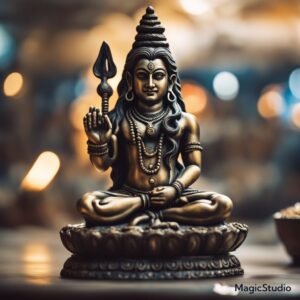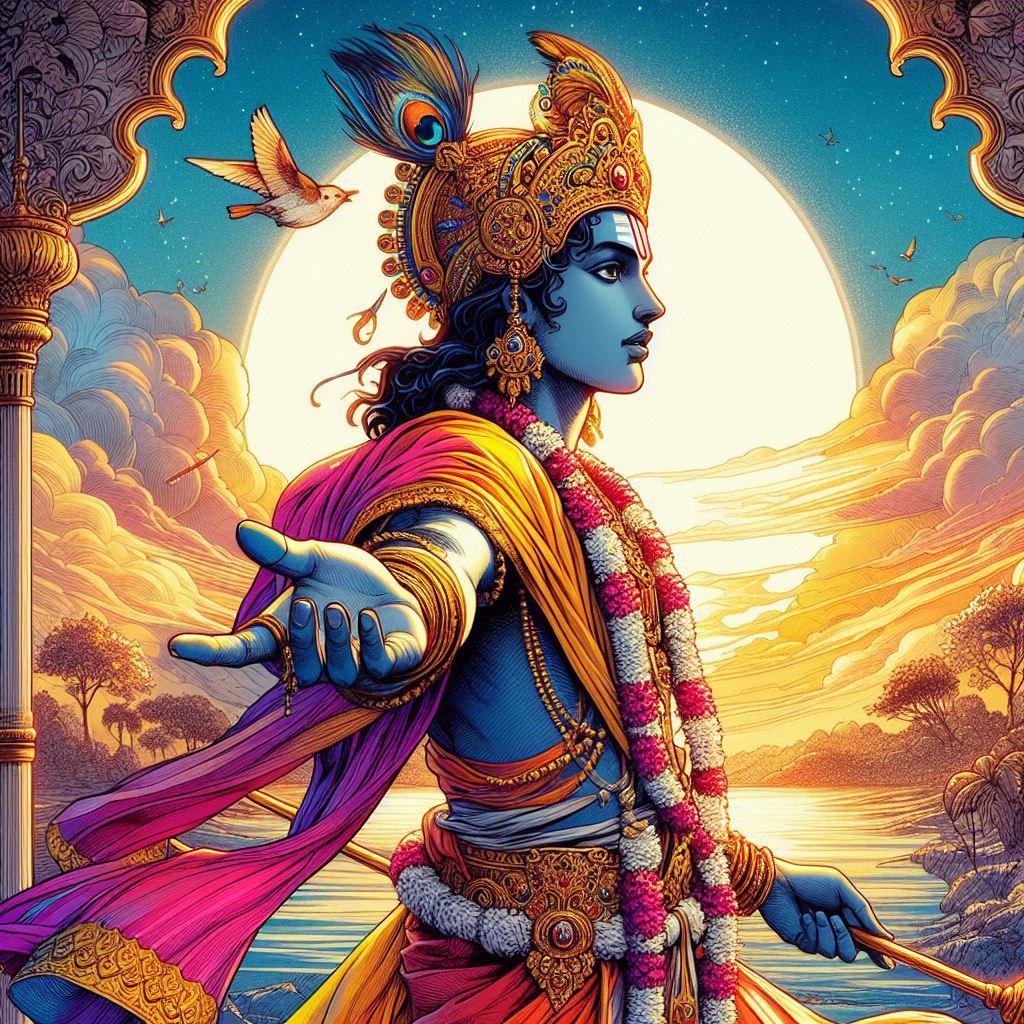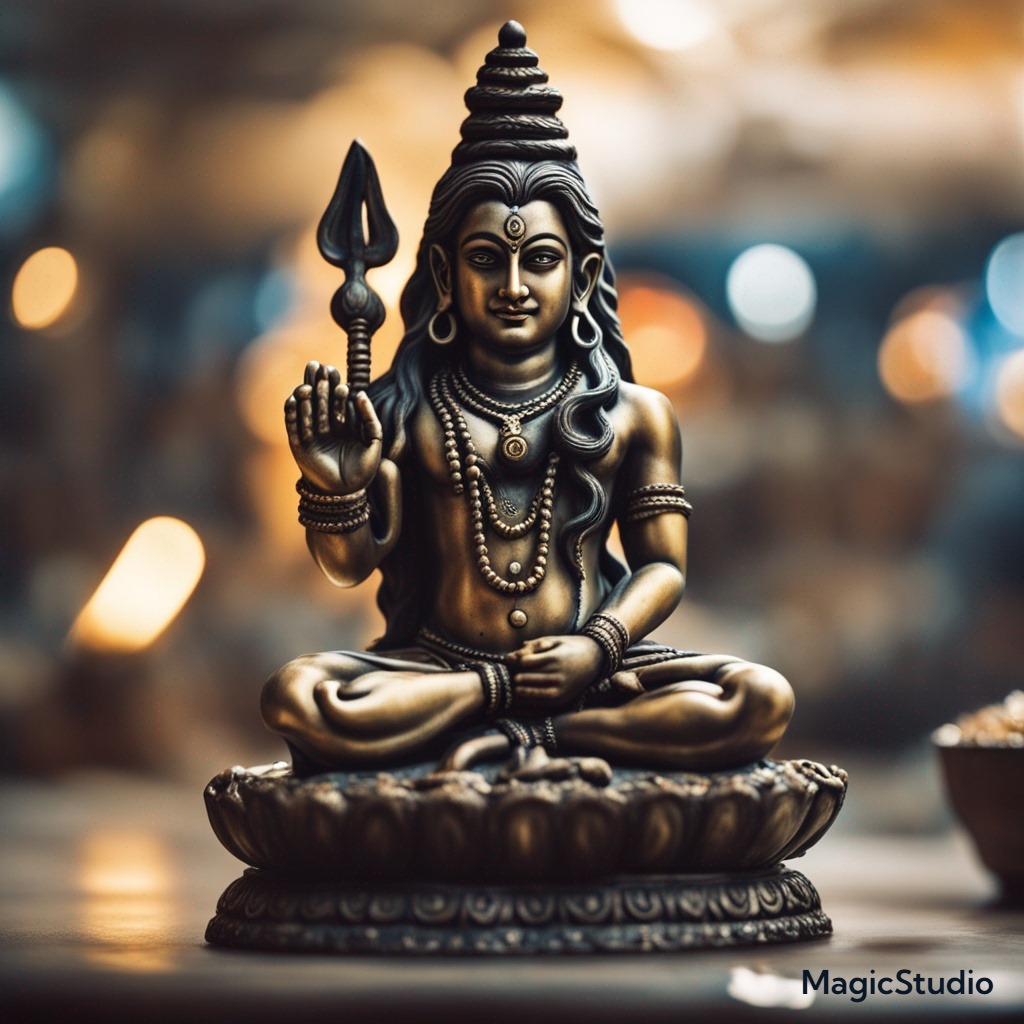A Story of Faith and Tradition in India
In a small, ancient village nestled at the foothills of the Himalayas, lived a humble family of priests. For generations, this family had been the keepers of the village temple, dedicated to Lord Shiva, the destroyer and transformer in the Hindu Trinity. Their lineage stretched back hundreds of years, and their lives were deeply entwined with the rhythms of the temple rituals and the devotion of the villagers.
The head of the family, Pandit Vishwanath, was a deeply spiritual man. His faith was not just a part of his life; it was his life. Every day, he would rise before dawn, bathe in the cool waters of the river Ganga, and perform the temple’s morning rituals, offering prayers to Lord Shiva. His belief in the eternal cycle of birth, death, and rebirth — the very essence of Sanatan Dharma, which people outside India called Hinduism — was unwavering.
Pandit Vishwanath had two children: a son named Aryan and a daughter named Gauri. While Gauri was drawn to the devotional aspect of their faith, Aryan, like many young people of his generation, was restless. He questioned the old ways, unsure if the rituals they followed held any meaning in the modern world. For him, the chants, the fire offerings, and the countless traditions felt like an unending list of rules, more of a burden than a blessing.
One evening, as the sun dipped behind the majestic peaks of the Himalayas, Aryan sat by the temple steps watching his father prepare for the evening aarti (prayer ritual). The golden light of the setting sun reflected off the temple bells, and the air was thick with the fragrance of sandalwood incense. Yet, in Aryan’s heart, there was unrest.
“Father,” Aryan began hesitantly, “why do we do all this? Why do we follow these ancient rituals? Do you really believe that these chants and offerings can change anything in our lives?”
Pandit Vishwanath smiled, his eyes twinkling with understanding. He had been waiting for this moment, for he knew the journey of every soul is a quest for deeper understanding.
“Aryan, come sit with me,” he said, gently patting the stone steps beside him. “Let me tell you a story.”
Aryan sat down, curious but skeptical.
“Many years ago,” Vishwanath began, “there was a great sage named Rishi Vyasa, who once encountered a young man much like you — full of questions, full of doubt. This young man asked the sage the same question: Why do we follow these rituals? Are they really necessary?”
“The sage smiled and led the young man to a river. He picked up a small pebble from the riverbank and dropped it into the water. The pebble sank to the bottom. Then, he picked up another pebble, wrapped it in a leaf, and placed it in the river. This time, the pebble floated.”
‘You see,’ the sage said, ‘the stone represents our soul. Left on its own, it will sink into the depths of ignorance, weighed down by desires and attachments. But the leaf represents our spiritual practices and rituals. They help the soul rise above the material world and connect with the divine.’
“Rituals, Aryan, are like the leaf. They lift us from the ordinary and connect us to the sacred. They may seem mechanical at times, but their purpose is to remind us of our higher nature, to help us transcend our daily struggles and to align ourselves with the cosmic order. Every chant, every offering, is a way of tuning ourselves to the universe.”
Aryan listened in silence, contemplating his father’s words. He had never thought of the rituals in such a way. For the first time, he saw the aarti, the prayers, and the temple offerings as something more than just tradition. They were a bridge to something greater, something eternal.
That evening, as the temple bells rang and the flames of the aarti lamps danced in the wind, Aryan stood beside his father. The villagers had gathered, their faces lit by the sacred fire. Together, they sang the ancient hymns, their voices rising in unison. The sound of the chants echoed through the valley, reaching out to the distant peaks of the Himalayas.
As Aryan held the aarti lamp and offered the flame to Lord Shiva, he felt something stir within him. It wasn’t an epiphany or a sudden transformation, but a quiet realization — that faith, like the river, flows through generations, connecting the past, present, and future. It was a thread that bound his ancestors to him, and him to his descendants.
In that moment, Aryan understood what his father had always known: that the rituals of Sanatan Dharma weren’t just about the divine; they were about life itself, about finding meaning and purpose in a world that is constantly changing.
From that day on, Aryan approached his faith with new eyes. He began to see the beauty in the old ways, not as relics of the past, but as timeless practices that guided the soul toward the eternal.








